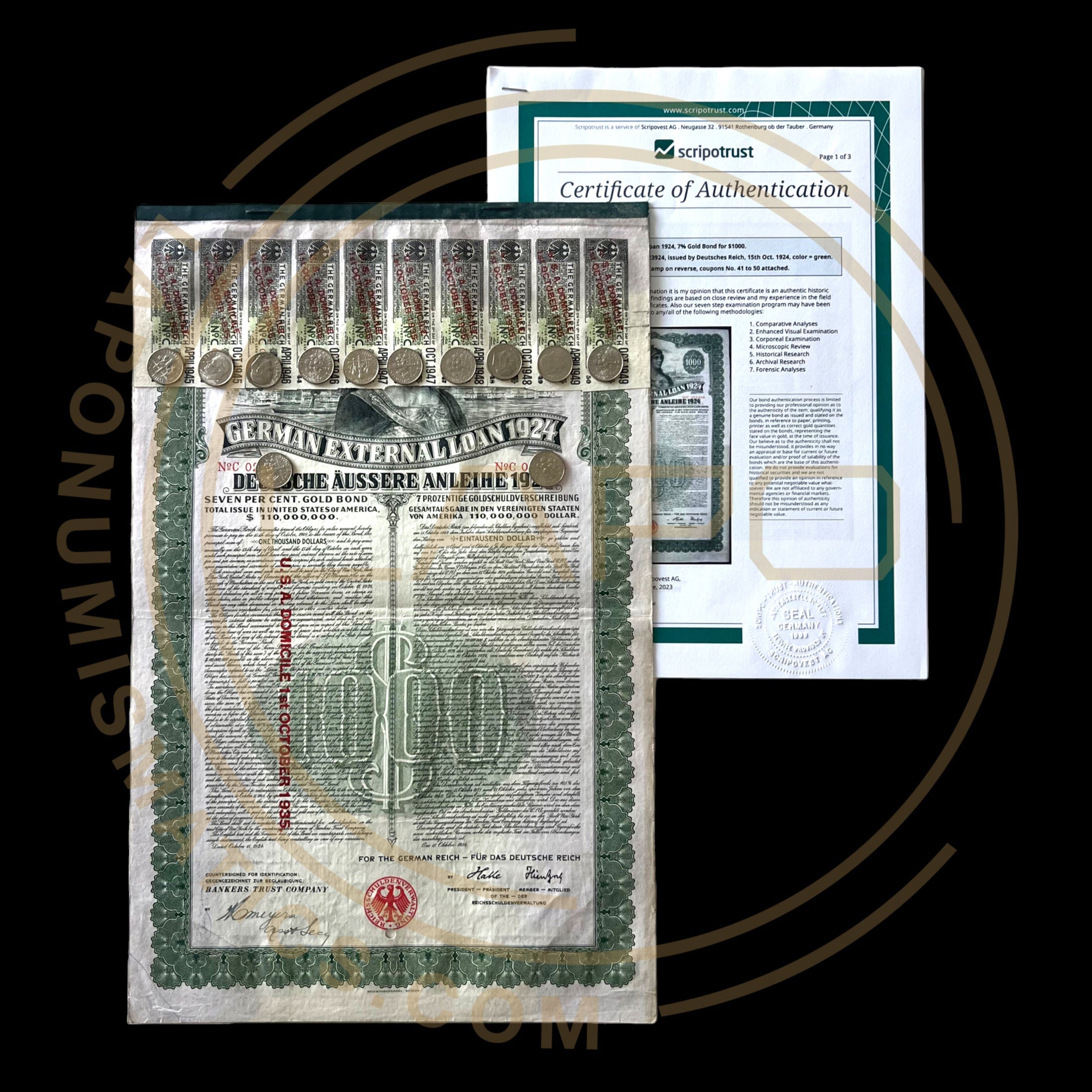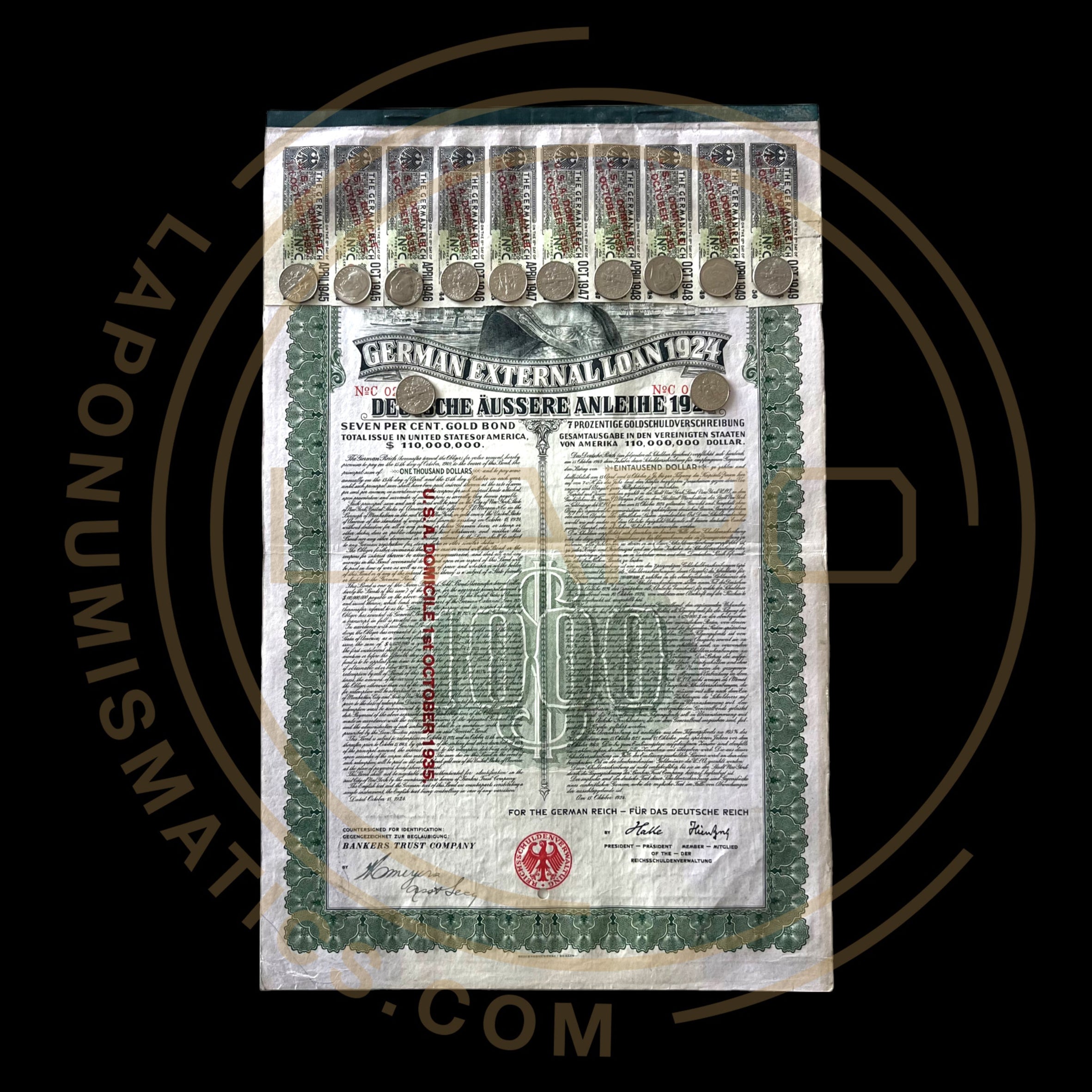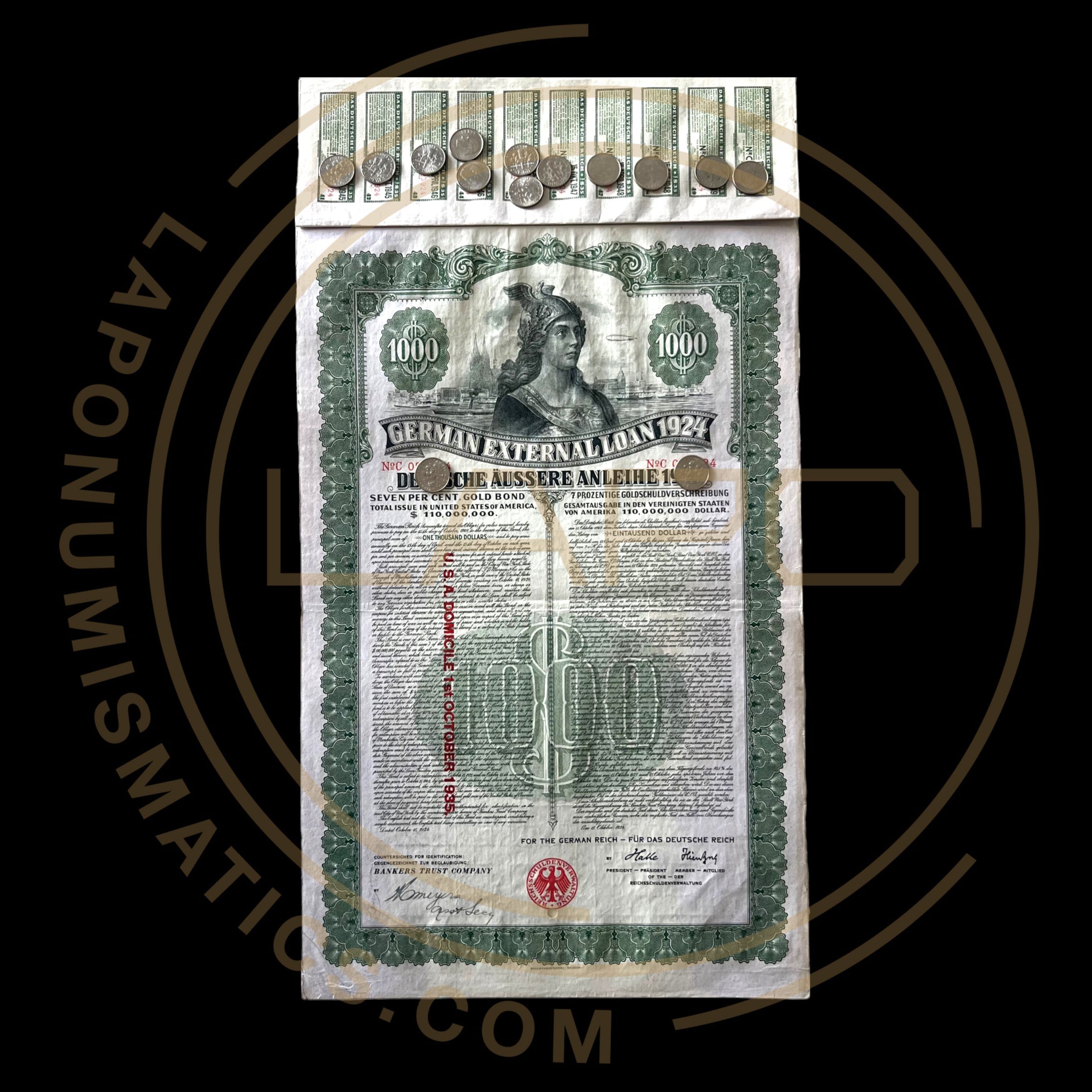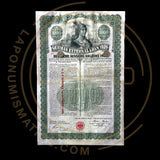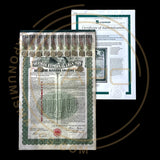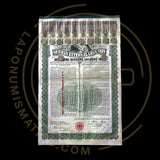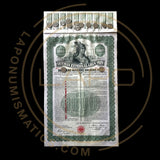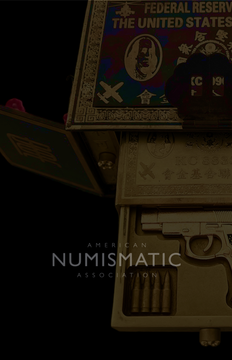1924 German External Loan – 7% Gold Dawes Bond – $1,000 – With Scripotrust Certification

We are Lapo Numismatics, We supply collectors with 100% original historical bonds, banknotes, collectibles and antiques, at the best price and in the shortest possible time.
Product Details:
1924 German External Loan – 7% Gold Bond – $1,000 – With SCRIPOTRUST Certification
1924 - GERMAN EXTERNAL LOAN GOLD BOND $1,000 - 10 COUPONS-HOLED
SCRIPOTRUST CERTIFICATE OF AUTHENTICATION
🇩🇪 1924 Dawes Bond – $1.000
The 1924 German External Loan – 7% Gold Dawes Bond – $1,000 is a historic financial instrument tied to the post-World War I economic stabilization efforts of Germany.
🏛️ Historical Context
After WWI, the Treaty of Versailles (1919) imposed heavy reparations on Germany. By the early 1920s, Germany was suffering from hyperinflation and economic collapse. To address this crisis, the Dawes Plan was introduced in 1924, largely designed by American banker Charles G. Dawes.
The Dawes Plan:
-
Restructured Germany’s reparations payments.
-
Stabilized the German economy.
-
Encouraged foreign investment in Germany.
-
Was backed by a large international loan — the 1924 German External Loan.
💵 Key Features of the 1924 Dawes Bond
-
Official Name: German External Loan of 1924 – 7% Gold Bond
-
Currency: Denominated in U.S. dollars, often in denominations like $1,000.
-
Coupon Rate: 7% annual interest, payable semi-annually.
-
Issued By: The German Reich (Weimar Republic) under international oversight.
-
Maturity: 25 years (due 1949).
-
Purpose: Funded reparations payments and stabilized the German economy.
🌐 International Backing
The loan was underwritten by an international banking consortium led by:
-
J.P. Morgan & Co. (USA)
-
N M Rothschild & Sons (UK)
-
Kuhn, Loeb & Co.
-
Credit Lyonnais
-
Bank of England
-
Among others.
This broad participation boosted investor confidence in the bond's security.
🏛️ Historical Significance
-
Germany defaulted on these bonds after Hitler’s regime came to power in 1933.
-
In 1934, Germany officially suspended reparations payments, effectively defaulting on this and other international loans.
-
As a result, these bonds were never fully repaid and are considered defaulted sovereign debt.
This is a secure site, we are members of:
- American Numismatic Association
- PMG


